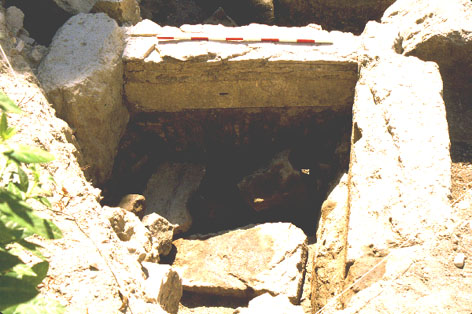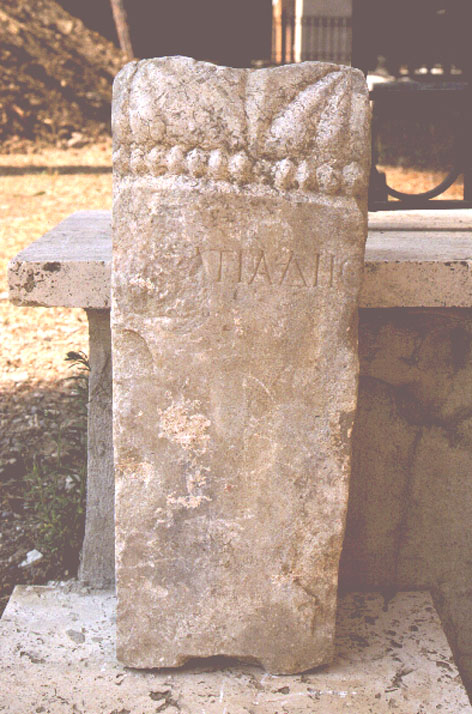

|
Blocking of the Aqua Traiana within the mill,
by Byzantine forces defending Rome during the Gothic siege of A.D. 537.
Re-used architectural blocks have been deliberately laid in the channel.
|
Water continued to flow through the Aqua Traiana, however, and to drive
other mills further downstream on the Janiculum until AD 537, as Procopius
(Wars V.xix.8 ff.) says that when the Goths cut the aqueducts during
the siege of Rome in that year, the greatest problem it caused for the
besieged populace was that the mills on the Janiculum were no longer able
to function. Procopius also records that the after the Goths had rendered
the aqueducts useless, the Byzantine commander, Belisarius, 'blocked each
of the aqueducts as securely as possible with masonry for a considerable
distance, so that nobody could get in through them from outside to do harm.'
We recovered striking archaeological confirmation of this in the form of
many large blocks of masonry and re-used architectural and sculptural fragments,
associated with sixth-century pottery, which had been deliberately pitched
into the channel of the aqueduct where it was accessible within the mill.
These were placed in too regular a fashion to represent collapse of a structure
above the channel, yet they were not mortared together and cannot therefore
have been intended to block the flow of water in the channel; the use of
spolia is a further pointer to the hasty nature of the work. The interpretation
of this as the blocking of the aqueduct on Belisarius' orders in March
537 therefore seems secure, and we are fortunate to have found the physical
trace of a closely identifiable event in the history of the city.
 |
Sculpture recovered from the blocked aqueduct:
originally a herm of Miltiades, it was later re-worked as a draped female
portrait bust.
Among the spolia removed from the blocking was a headless herm, originally inscribed [Mi]ltiadhc, but recut in late antiquity as a draped female bust with a new head (also lost) inserted.
|
| Next | Previous | Home |
Go to:
Other Links: